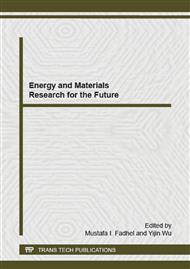p.31
p.38
p.43
p.50
p.55
p.63
p.69
p.75
p.79
Effect of Surface Texture Molded by a Stainless Steel Mesh on the Invisalign Material Friction Coefficient
Abstract:
Objective: This study aimed to evaluate the effect of surface texture mold by stainless steel (SS) mesh on Invisalign material friction coefficient. Materials and methods: Ten kinds of SS mesh were used to mold surface texture on Invisalign material. Experiments were conducted using a zirconia ball that slid against Invisalign material plates with different surface textures. In the experiments, the coefficients of friction under normal loads of 100, 200, and 300 g under dry and artificial saliva conditions were recorded. Results: The coefficient of friction was relative to the pore size and wire diameter of SS mesh. Conclusions: The Invisalign material coefficient can be effectively managed by the surface texture mold by SS mesh.
Info:
Periodical:
Pages:
55-60
Citation:
Online since:
February 2015
Authors:
Keywords:
Price:
Сopyright:
© 2015 Trans Tech Publications Ltd. All Rights Reserved
Share:
Citation:


